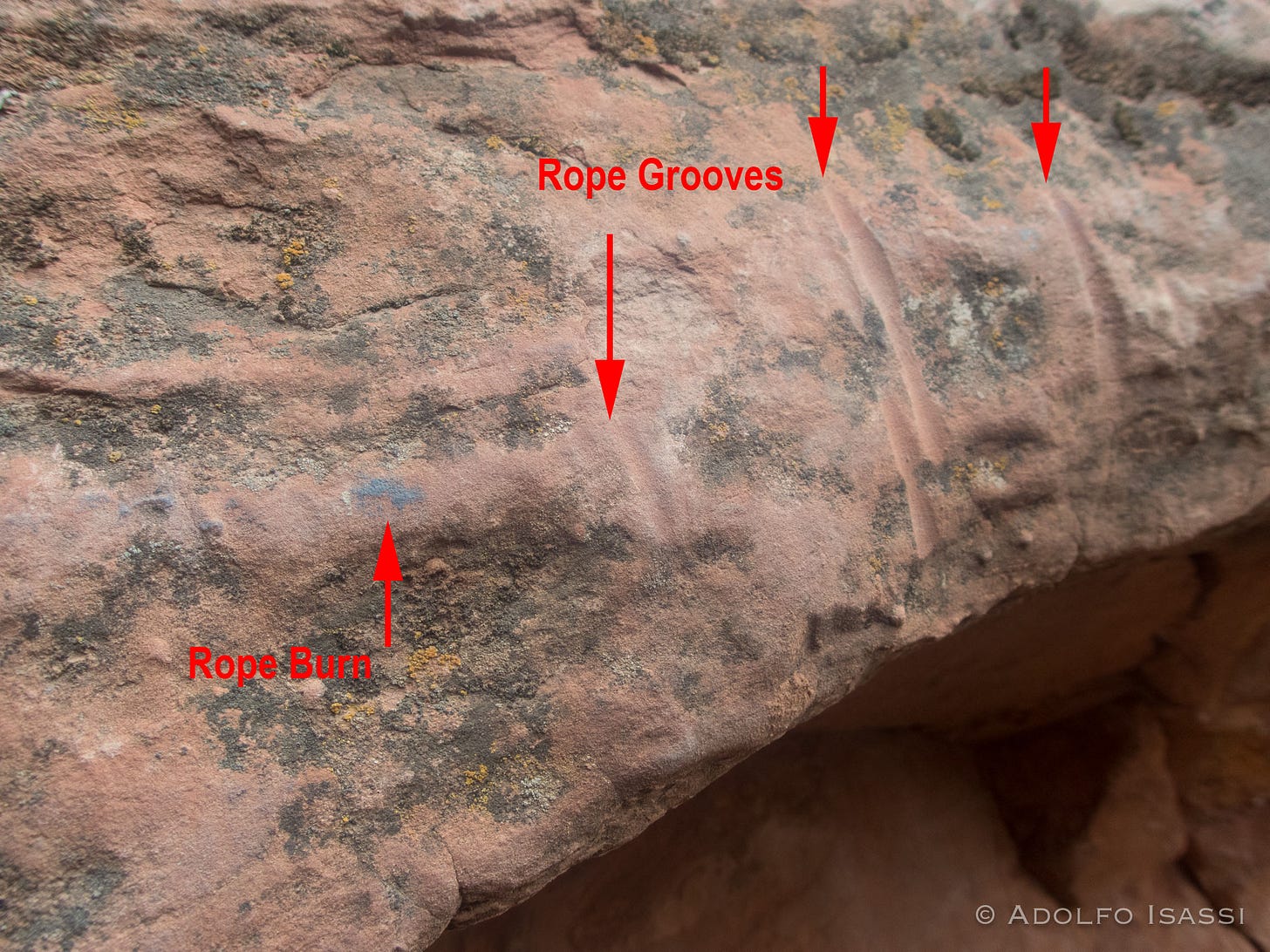In the American Southwest, where rock is soft, some canyoneering practices damage rock.
On routes that are rarely done, this damage starts as rope marks or "rope burns". Superficial marks that the canyoneering rope leaves while getting pulled down from the rappelling anchor.
If a rappel with "rope burns" gets hit with more traffic, those rope burns turn into "rope grooves". Rope grooves are not longer rope material smeared in the rock, they are actually longer term rock damage. If canyoneers do not address these rope damages at this early stage, the rope grooves get deeper and deeper, to the point that they are more than an eye sore. They become a rope trap where ropes get stuck on retrieval.
SO, WHAT CAN YOU DO?
If you see a rappel with rope damage, in early stages:
Pull the rope down away from the rappelling wall. Walk back as far back as possible until you make eye contact with the anchor at the top.
If the anchor is so badly located that you can not see it from the bottom, try to move the anchor to a better location.
If you can not move the anchor...
IF YOU CAN NOT MOVE THE ANCHOR
This may be due to scant natural anchor opportunities, or due to a bolted rappel station that is badly located.
If all in your group are proficient with self rescue, set the rope length for the first person if you are unsure of the length of the rap, and then convert the system to Transient Rigging (ghosting) for last 2 team members, so they can partner check the conversion.
If this is known trade route that has been ruined by commercial guides with badly placed bolts, consider TRR (Transient Releasable Rigging). This will allow you to retain all the benefits from -releasable contingency rigging- and allow you to pull the rigging in a Transient way (ghosting) to prevent more damage or stuck ropes.
What happens when no prevention or mitigation is done?
Medium rock damage
Deep grooves that can result in a stuck rope during recovery
An example of a badly located rappel station that results in rock damage
References:
Releasable to Tails Up Efficient Transition
Transient Rigging: Is It Useful for Professional Guiding?







